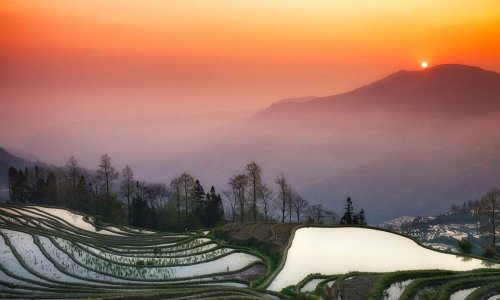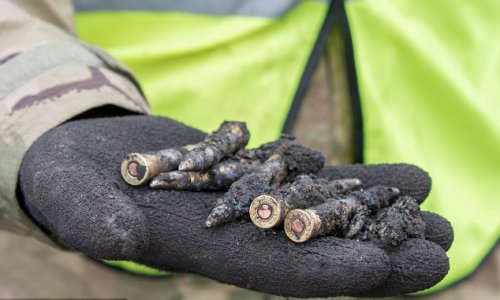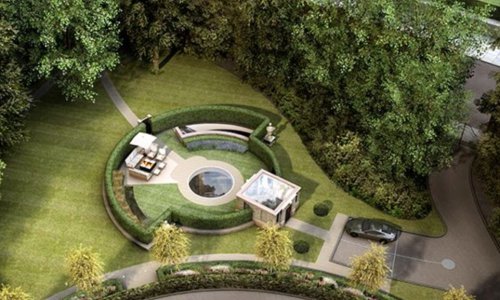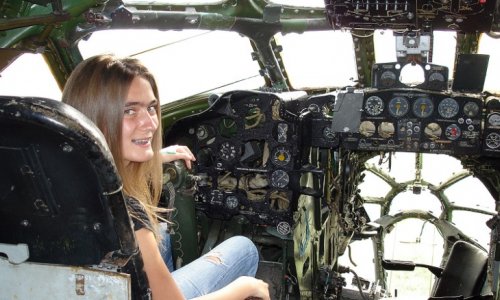Over the years I've witnessed many societies racing to catch up after decades lost to corruption or conflict, from post-Soviet Moscow to post-war Yugoslavia. In those places the symbol of success was a stolen German car. Today there is an entire global youth bulge from Lagos to Beirut to Jakarta trying to overcome the many obstacles that have held them back—and they all seem to have subconsciously arrived at the same formula for survival in an age of self-reliance: Caffeine, cash and connectivity.
Particularly since the November 2013 Joint Plan of Action (JPOA) signed with Western powers, Iran's suppressed youth have entered a hyper-kinetic overdrive.
Nowhere is this more visible than in the country's mega-city capital, Tehran. Ask a Tehran entrepreneur how he does business without access to the SWIFT banking network, the financial equivalent of the Internet. Or how Iranians keep up their multiple passports to travel the world despite growing restrictions on their buying into dual citizenship programs. Or how the latest gadgets wind up in the sprouting mega-malls around the city despite what U.S. President Barack Obama called the "toughest and most comprehensive sanctions." I always got the same answer, delivered with a shrug and a smile: "We just do it."
In a way, Iran has been a just-do-it society for decades. Since the 1979 revolution, Iran's theocratic leadership has taken masochistic pride in its self-imposed pursuit of self-sufficiency. After India and Pakistan's 1998 nuclear tests, one heard in both countries admiration for how Iran's toughing out sanctions and building stronger indigenous industries would be their role model. Within Iran, of course, it is the government that has effectively sanctioned its own people -- and the youth (two-thirds of the population is under 35) who have to work around the constraints. Spend a week in Tehran and you'd be forgiven for thinking that the post-sanctions opening has passed even though it hasn't even really begun yet. You would have little doubt that when the time does actually come, Iran is indeed going to dominate the region -- but with its brains and markets, not its nukes.
Iran is both where America's power to isolate has most been felt, and also where its lack of a plan to compete in a connected world is most evident. A year ago drumbeats were pounding with the march towards war. Yet today it is the tug-of-war that is heating up to gain the upper hand in doing business with the world's last great emerging market.
European sanctions are all but gone as the French and Germans angle to sell airplanes and machine tools, Chinese are building railways and boring tunnels through the Alborz Mountains between Tehran and the Caspian Sea, and American hardware from Boeing and GE is being sold again. Coca-Cola already leads the soft drinks market thanks to its Irish subsidiary's joint venture with a local bottling company.
Everyone wants a slice of Iran's 80 million-strong market for pharmaceuticals, cars and everything else. Sanctions can't "snap back" when the latch has been blown apart.
Iran is the westernmost anchor of the physical axis being paved by the $50 billion Asian Infrastructure and Investment Bank (AIIB), China's preferred means of dumping surplus building material on its neighbors and paving across them to reach the Middle East (while reducing dependence on shipping through the Malacca Straits). Railway connections from Europe and Turkey, gas pipelines in the other direction as well as to Pakistan and India, new ports on the Arabian Sea, and enlarged airport terminals welcoming more direct flights from East Asia are just some of the many mega-projects re-connecting Iran to its neighbors. Isolating such a centrally located country was never going to last.
After hours of discussions with officials at the Ministry of Foreign Affairs, one senior diplomat tried to stump me, asking, "If you were the Ayatollah, what would you do?" He knew my answer, because they were already doing it: Make Iran a mega-hub of the new Silk Road.
Rich ironies
One of the first places I was taken on arrival in Tehran was the steep narrow alleys of the Jamaran district, where the home of Ayotallah Khomenei is now a museum. In a spare antechamber, the chair from which he gave his fieriest speeches in 1979 sits draped in cloth, just across from a video camera still mounted on a tripod. While 52 Americans were held hostage in the U.S. Embassy in the city center, Khomenei held the world hostage from this humble nook.
The deep irony of the Islamic revolution is that it sought to Islamicize a socially liberal society. A half-century earlier, Kemal Ataturk forced secularlism on the fairly religious Turkish society. Indeed, vibrant and cosmopolitan Istanbul is something of an exception to the majority of Turks who consider themselves fairly or very religious, forming a crucial support base for Prime Minister Erdogan's AK Party. By contrast, only one-third of Iranian youth believe that religious figures should have a role in politics. But of course since 1979 they have had little choice in the matter.
It's hard to imagine a country where the gap between the government and the people could be greater than Iran. Public restaurants are closed during Ramadan, yet many people across Tehran snack throughout the day. Officially the regime scorns the decadence of Western culture, yet Tehran's late-night house parties are famed for their ribald licentiousness. In Iran's major cities it's not uncommon for unmarried couples to live together. They just do it.
Khomenei's Jamaran stronghold lies a stone's throw from Tajrish, Tehran's most posh neighborhood. At upscale malls like the SAM Center, the Iranian preference for saying merci for "thank you" fits nicely with the sleek décor of over-priced French cafes. Iranian artists who have been in residence from Paris to Tokyo display worthy paintings in galleries such as Ariana and Mohsen. Their soft power has convinced the government to show flickers of cultural openness. A decade ago the Bahman House complex in south Tehran opened, with a half-dozen other branches sprouting up to host international and local exhibits and teach English. The Museum of Contemporary Art, one of the largest collections of Western modern art from Monet to Pollock, has gotten a makeover. Earlier this year major billboards along the city's freeways switched from depicting Iran-Iraq war martyrs nobody recognizes to giant Rembrandts and Picassos.
The beautification program is the brainchild of mayor Mohammad Bagher Ghalibaf, a former Revolutionary Guards Air Force pilot with a PhD in political geography who finished second to Hassan Rouhani in the 2013 presidential election. It was his 1990s predecessor Gholamhossein Karbaschi -- probably the only person ever trained both as a cleric in Qom and an architect in Italy -- who launched the post-Iran-Iraq war "construction jihad" to revive Tehran's crumbling facades (much as he had done for the previous five years as governor of resplendent Isfahan). He made the city one of lengthy boulevards named after foreign countries, and green spaces embedded in the streetscapes rather than walled off. Almost all my commuting around Tehran was on a motorcycle, allowing me to hop on and off and appreciate the manicured parks and gardens -- complete with fitness stations, sculpture gardens and playgrounds -- Karbaschi landscaped into dozens of neighborhoods. They are a reminder that Persian civilization needs aesthetic guidance from no one.
Tehran's current construction boom, like that of Khartoum or Damascus before the Arab Spring, provides yet more cognitive dissonance: Sanctions, really? As Tehran's population has grown by 1 million per decade since the revolution, one of Karbaschi's most notorious successors, Mahmoud Ahmadinejad, used both his mayoral and presidential tenures to strengthen the hand of the Bank-e-Maskan (housing bank) to finance massive new volumes of low-income housing in the city's bulging eastern and western flanks. Particularly the south towards Imam Khomenei Airport has the grittier neighborhoods where one finds higher youth unemployment and heroin addiction, but even these are far more dignified areas than the slums of outer Cairo.
When Ghalibaf became mayor in 2005, he kicked the gentrification campaign into industrial overdrive with a vertical campaign of space-saving mid-rise real estate. Modern apartment complexes with a capacity of 750,000 residents lie near completion at the foot of the Alborz, like New Dubai minus the neon. Amid the building bonanza, one building that has remained unfinished since the revolution is the giant Mosalla mosque. In 2008, Ghalibaf had the Ghasr prison turned into a museum and park, and three months ago formally petitioned to do the same to the city's notorious Evin prison (where the Washington Post's Jason Rezaian is currently being held).
Given his resume, Ghalibaf's natural inclination has been to sell building rights to the commercially savvy Revolutionary Guards, the shadow government holding the trump card over strategic decisions such as the nuclear negotiations that also operates an external action arm, the Quds Force, which has organized Shia militias in Iraq to wipe out Sunnis, flooded the country with IEDs to maim U.S. troops -- and now spearheads Iran's efforts on the ground to counter ISIS.
On home turf, RevGuard companies, together with those linked to the Defense Ministry, own an estimated two-thirds of the land in greater Tehran. The military-real estate-complex is par for the course in Venezuela, Egypt, Pakistan and Indonesia as well, all countries where the military is effectively in charge even when it's not. One architect joked to me that the corruption in Iran's real estate market makes FIFA look clean by comparison. The next generation of RevGuard has spread its tentacles beyond real estate into lucrative import-export business like cars and smuggling alcohol on donkeys from Kurdistan.
Tehran's grand bazaar is another place to witness Iranians' prowess at complex deal-making at work. Just outside the main entrance, a few dozen men gather to negotiate the day's exchange rate. At times this informal gathering has been more influential than Central Bank policy: In 2013, they so quickly drove down the toman versus the dollar the government stepped in and cracked down. During my visit they were back to openly focusing on the matter at hand. The bazaar itself is a multi-level hierarchy: Bulk trade and storage of everything from fabrics to appliances is done in the basement, while upstairs in ornate offices sit the hajj bazaaris, the elder statesmen of the labyrinthine enterprise; most people of course just get lost wondering on the main floor's endless alleys. A native Tehrani like my friend Roozbeh Aliabadi can efficiently navigate you virtually blindfolded through the entire bazaar, including the stall where he sold kids' clothing when he was eight years old.
Roozbeh actually spent 20 years in the U.S. before recently returning to launch a boutique investment facilitation business. He is one of hundreds if not thousands of "re-pats" who never thought they'd return from the West but are now capitalizing on the opportunities created by Iran's opening. Since the revolution, Iranians attained visas and residency from Canada to Australia based on their talent and education. But as in Colombia and Myanmar, today's Iranian re-pat influx is one of the best indicators of the country's potential.
Rouhollah Rahmani is another re-pat. Born and raised in Ohio, Rahmani was one of the creators of Microsoft Bing before working at Amazon. Now he runs the Artificial Intelligence Lab at Tehran University and advises the tech incubators sprouting up -- run by other re-pats. Rouhollah told me that so long as you create a "don't care list" of conveniences from Seattle you can live without -- high-speed Internet, minimal traffic and predictable food prices -- you'll thrive as a re-pat. Tehran has become part Beirut, part Berlin.
A visit to Rouhollah's classroom reveals how difficult it is to predict continuity in Iran's current socio-political hierarchy: 70% of his computer science students are women. That's right: While women are in short supply in STEM programs in America, they dominate Iran's technical student body. Can one really imagine that two decades from now women will be banned from attending major sporting events?
The ear-splitting evening I spent in Azadi Stadium for the U.S. versus Iran men's volleyball match embodied just a few of the country's domestic and international paradoxes. Women were officially not allowed to attend as fans -- ostensibly to protect their chaste ears from the male public's crude chants -- but more than a few mothers and daughters were visible around the stands. Most of the official scorekeepers sitting courtside were veiled women. (Better math skills?)
Equally importantly, the crowd was unwaveringly hospitable to the U.S. team, from the Star Spangled Banner through the final handshakes after Iran upset the top-ranked Americans 3-0. The surveys aren't lying: Iranians are wild about America. The more Iranians I met the more I saw the similarities between the two societies. Both cultures are full of no nonsense, go get 'em, smartest-guy (or girl)-in-the-room types of people. The next day, the towering American men were mobbed like rock-stars for autographs on Vali-e-Asr, Tehran's 18-kilometer long North-South thoroughfare.
I rode up and down Vali-e-Asr several times a day for various engagements, each time discovering more examples of Iran's tenuous open-yet-closed nature. Vali-e-Asr itself is such a vital artery, but with the Interior Ministry located near the midway point, it was strategically closed off during the 2009 election protests. Numerous flashy mega-malls have also popped up along the boulevard, with unofficial "almost Apple" stores designed to look exactly like the authorized versions, complete with peppy staff in blue T-shirts. Especially at the northern end in Tajrish, female hairstyles and fashions are utterly reckless by the standards of a decade ago.
Women wear their headscarves like a last-second throw-on they almost forgot, and scarcely bother to cover even half their often blonde (and even blue!) dyed hair. Nor are Tehran's femmes in any rush to put headscarves back on when they fall around their shoulders -- which seems to happen just about every two minutes. Then there is the roupush (manteaux or cape) all women wear if not in a full chador. Here the sartorial requirement meant to promote modesty has become a tool of seduction, tightly bound or slit from the hip down. Iran is not yet a country where the next generation can simply demand rights, but they are confidently expressing their expectations while cavorting over melt-in-your-mouth pastries at stylish bakeries. The henchmen (and women) of the Commission for the Promotion of Virtue and Prevention of Vice just watch idly, if they are present at all anymore.
Shifting fortunes of region
Tehran is a mega-city that scarcely makes it on anyone's travel itinerary. Global surveys ranks Iran as one of the least trusted powers in the world -- a reflection of its too-clever-by-half tactics in the nuclear negotiations -- and it receives fewer annual tourists than Cambodia. But geography alone -- and certainly in combination with the lifting of sanctions -- guarantees that Iran's connectivity with the world will surge in the coming years. Irrespective of the outcome of the protracted nuclear negotiations, the train has left the station. Iran is setting up a half-dozen Free Trade Zones (FTZs) to boost investment in the retail, logistics and petrochemical sectors, and taking steps to brand itself as the exotic and safe civilization that it in fact is despite the failed states surrounding it on all sides.
A decade ago I waited three days in Kurdistan's Suleymaniah only for the Iranian consulate to refuse me a visa during the Nowrouz festival. Soon citizens from dozens of countries will simply get e-visas or visas-on-arrival as India recently (finally) began to offer.
The Tehran of tomorrow will indeed be the main junction of the southern Caspian as freight and passenger railways cross from Europe to Central Asia. A five-star British-owned luxury train service opened last year with passengers setting off from Budapest for a multi-city tour of the "Jewels of Persia" such as Mashhad, Yazd, Shiraz, Persepolis and Isfahan.
Meanwhile, as the world's fourth largest producer of cement (and the largest in the Middle East), Iran's next "construction jihads" are already spreading across Iraq, Syria and Afghanistan, the same countries where Iranian agriculture is the lifeline for millions of destitute refugees and displaced peoples. Iran is connected to its neighbors no matter what sanctions remain in place.
Since 2013 a half-dozen negotiation rounds have come and gone, with hyperbolic weight attached to each deadline. But the shifting fortunes in the region have little to do with such arbitrary milestones. A decade ago Egypt was considered the anchor of Arab civilization, Turkey was flexing its neo-Ottoman muscles, and Iran seemed frozen in time with a radical regime and stagnant economy. Today Egypt is widely dismissed as a military soup kitchen, the Arab world's overpopulated welfare case. Turkey's ambitions have hit major political and economic hurdles as Recep Tayyip Erdogan's super-presidentialism was just rejected at the polls and the credit bubble popping. Iran, by contrast, has hit rock bottom and is on the rebound. The "just do it" generation is just getting warmed up.












www.ann.az
Follow us !











